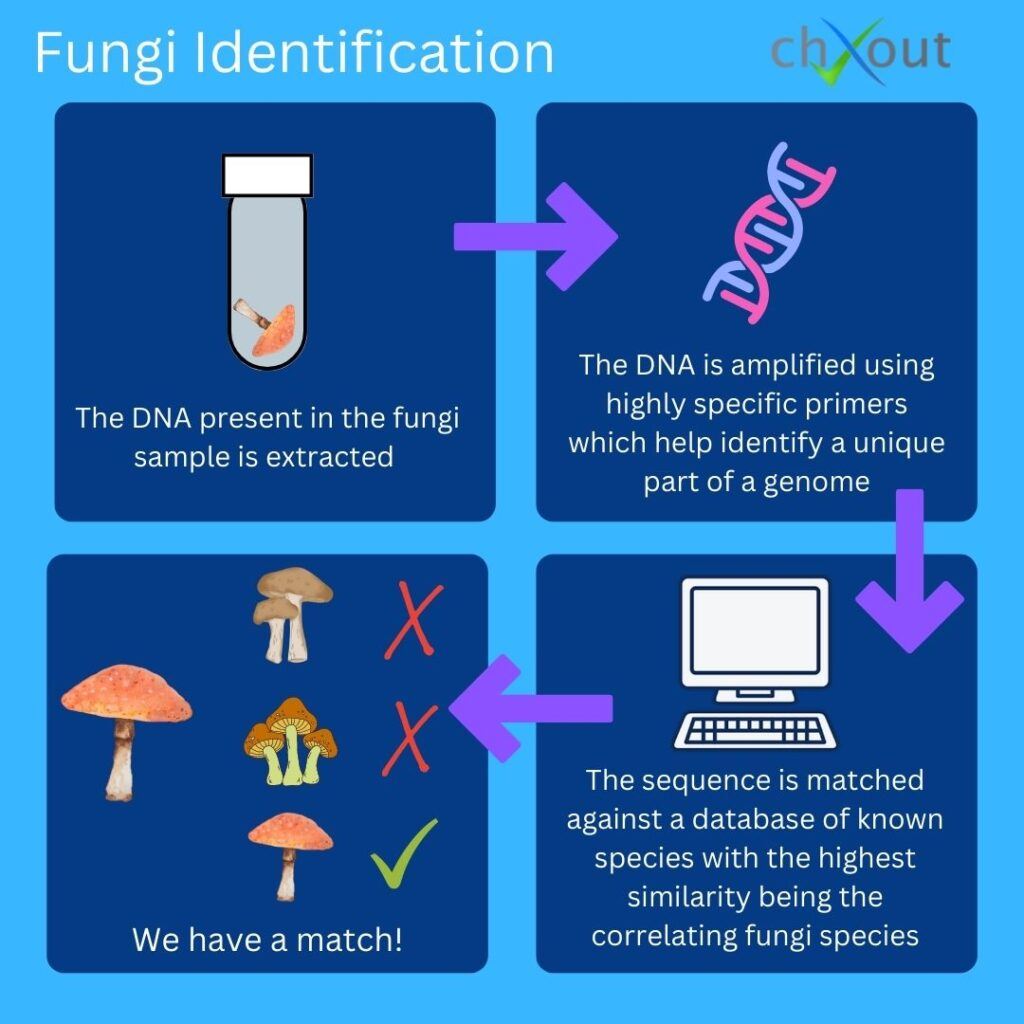DNA Barcoding Fungi
THE FUNGI KINGDOM
Fungi are one the largest and most diverse groups of organisms in the world. As we have the plant and animal kingdoms, fungi make up a kingdom of their own. From just talking a look at them, you would probably assume that fungi and plants are very similar, when in fact fungi are actually biologically closer to animals.
Fungi are responsible for important environmental processes such as nutrient cycling and plant, animal and soil health. Humans also rely on fungi in food production, including items such as cheese, bread and chocolate and the manufacture of drugs and biofuels. Not forgetting that there is a huge market for edible mushrooms all over the world.
Mycology is the study of fungi. For something that is so important to ecosystems and biodiversity, fungi are under-studied when compared with animals and plants. There are estimated to be at least six times as many species of fungi than plants, anywhere between 2 and 11 million! Approximately only 150,000 of these have been officially described or recognised.
The criteria used by taxonomists to describe fungal species can make it very difficult to describe, identify and compare across the many different groups. More recently, fungi identification has advanced with the help of DNA barcoding.
WHAT IS DNA BARCODING?
DNA barcoding is a method used to identify species using specific regions of DNA (the barcode) and each species has its own unique barcode. In a very short description, there are generally four steps to the process: extraction, amplification, sequencing and then the analysis.
Extraction: DNA is extracted from the sample
Amplification: Polymerase Chain Reaction (PCR) is used to amplify the specific region and make lots of copies of this area

Sequencing: the barcode region is sequenced to form its barcode
Analysis: the barcode is compared to a reference database of DNA barcodes to look for a match.
DNA BARCODING FUNGI
The International Fungal Barcoding Consortium published a paper recognising the internal transcribed spacer (ITS) regions of the ribosomal RNA (rRNA) gene cluster as the DNA barcode for fungi in 2012 resulting in a large increase in studies into fungal barcoding for species identification.
The unique parts of the fungi genome used for species identification are the ITS regions (ITS1 and ITS2) and 5.8 ribosomal DNA (5.8 rRNA) gene. These are sequenced to produce a DNA barcode for fungi.
UK FUNGUS DAY
Saturday 7 October 2023 is UK Fungus Day organised by the British Mycological Society. This year is the 10th anniversary of the day to celebrate all things fungi.
UK Fungus Day was introduced to promote education about the fungal world and the importance of fungi to life on earth. Lots of events, talks, exhibitions and walks take place on and around this date across the UK to give everyone the opportunity to learn about fungi.
There are lots of local fungus groups across the UK run by volunteers which anyone can join to learn more about wild fungi and fungal identification in a fun and educational way.
Are you doing anything for UK Fungus Day this year? Take a look at the scheduled events if you would like to get involved and learn more.
